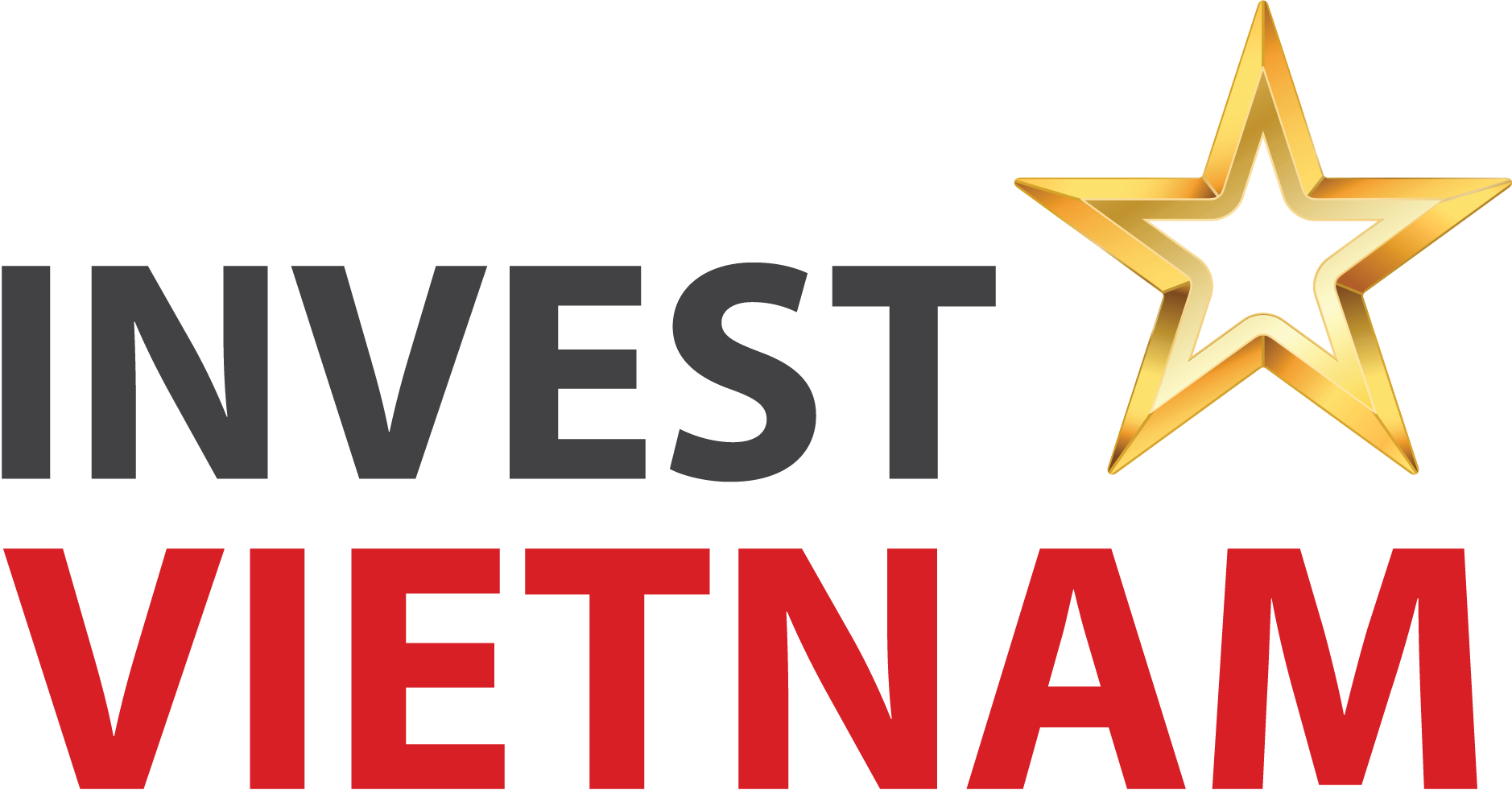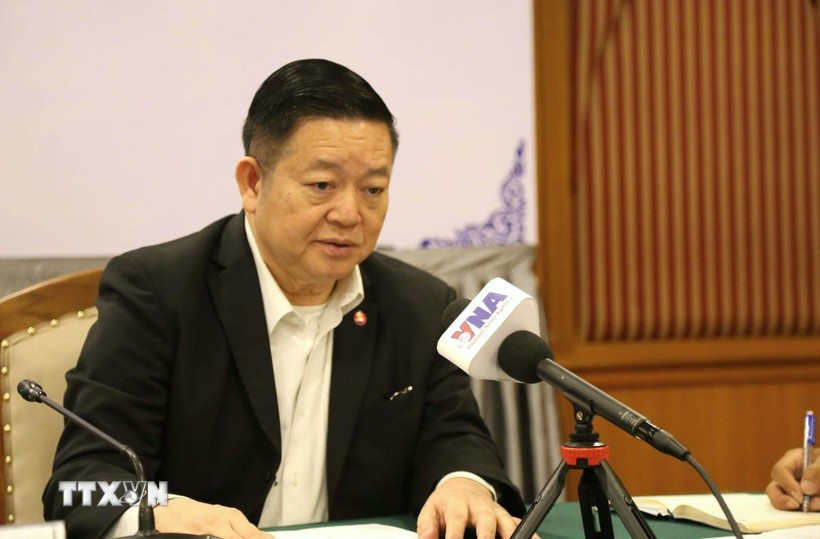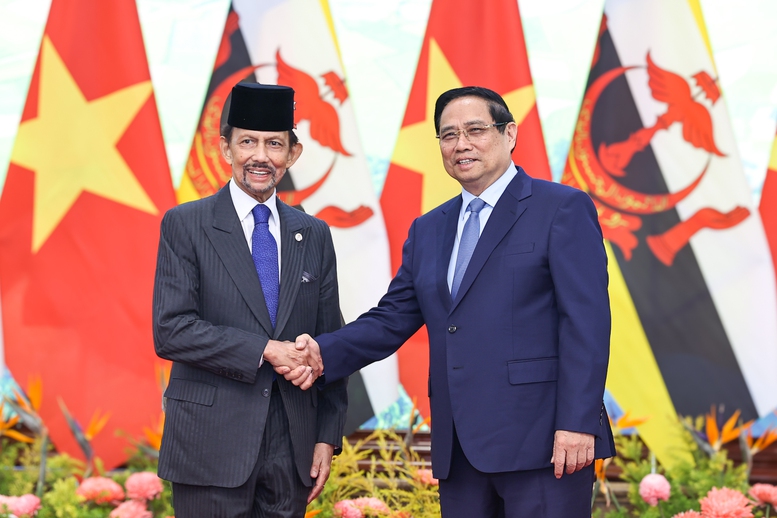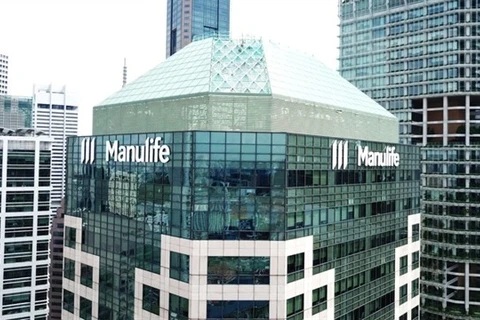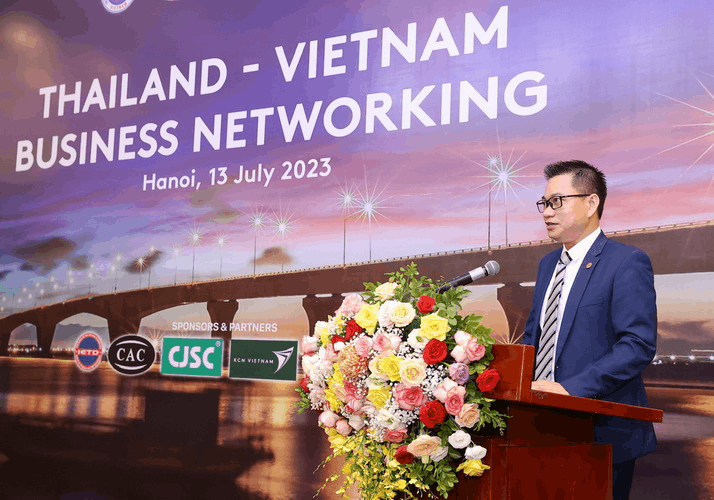EU, Viet Nam look to upgrade their relationship to Comprehensive Strategic Partnership
Strategically, the EU and Viet Nam's intention to upgrade their relationship to Comprehensive Strategic Partnership will offer significant momentum for an enhanced cooperation for the benefit of both the two sides, said EU Ambassador to Viet Nam Julien Guerrier.
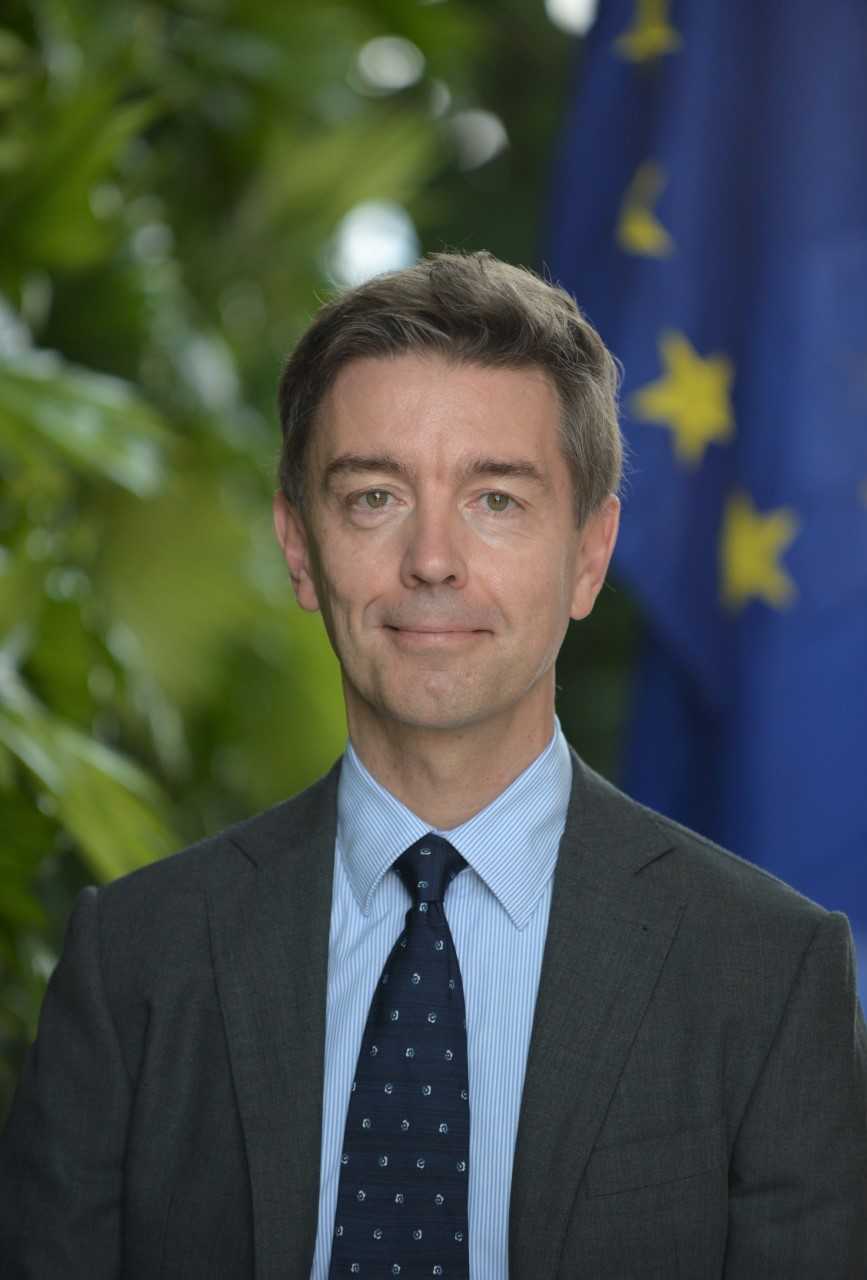
The Ambassador made the point in an interview with VGP on the threhold of the 35th anniversary of diplomatic relations between the European Union and Viet Nam (November 28, 1990-November 28, 2025).
Over the past decades, the partnership has expanded significantly across various areas. Could you highlight some of the key achievements in EU–Viet Nam relations?
Ambassador Julien Guerrier: Diplomatic relations between both sides were established in 1990 — marking the official beginning of a relationship that has grown steadily ever since. Today, we can say with confidence and pride that this is a truly meaningful partnership that has evolved remarkably — bilaterally, regionally, and globally — not only in economic terms but also, and increasingly, in political cooperation.
In the early days, our focus was on a joint humanitarian programme that helped resettle more than 100,000 Vietnamese "boat people." Thirty-five years later, our cooperation now spans a wide range of areas, including trade, the environment, energy, science and technology, good governance, cultural exchange, migration, the fight against corruption and organised crime, as well as peace and security.
Viet Nam has become an increasingly important partner for the European Union, sharing a strong commitment to multilateralism and the international rules-based order. In 2016, we concluded the Comprehensive Partnership and Cooperation agreement which laid down the basis for our relations since then.
The progress we have made together is best illustrated by the EU–Viet Nam Free Trade Agreement (EVFTA) — the first of its kind between the EU and a developing country. Since its entry into force in 2020, bilateral trade has increased by around 40 percent, bringing our economic partnership to unprecedented heights.
On the development side, the EU currently manages an active grant portfolio of nearly €300 million, with an additional €160 million in the pipeline. Our priorities include sustainable green growth, decent work and responsible business practices, and good governance.
Our largest current programme focuses on supporting Viet Nam's energy transition, providing technical assistance to government counterparts with a total funding of €142 million. This reflects our shared commitment to promoting sustainable development, the rule of law, and human rights.
In 2019 we signed a Framework Participation Agreement which enables Viet Nam to take part in EU-led missions and operations. This is the first such agreement the EU has concluded with an ASEAN country and represents a significant step in our shared contribution to global peace and security.
Looking at these achievements, it is clear that none of this progress would have been possible without the dedication of both sides to deepen our partnership — and the mutual understanding that advancing it serves the best interests of both the European Union and Viet Nam.
Looking at these achievements, it is clear that none of this progress would have been possible without the dedication of both sides to deepen our partnership — and the mutual understanding that advancing it serves the best interests of both the European Union and Viet Nam.
The signing of the EU–Viet Nam Free Trade Agreement (EVFTA) was a major milestone in our bilateral ties, and 2025 marks the fifth anniversary of its implementation. Could you share some of the positive outcomes that have resulted from the EVFTA since it came into effect?
Ambassador Julien Guerrier: The EVFTA has come into effect at a critical moment of time when Viet Nam needed trade liberalisation most. The agreement was implemented just several months before the COVID-19 hit the global and Vietnamese economies. With global consumption shrinking, the EVFTA provided a cushion to the Vietnamese economy. Vietnamese exports grew double digit while global exports were falling significantly. In 2021, when almost all the economies in the world were struggling, Viet Nam still achieved 5.1 percent of export growth and that growth maintained its momentum during the five years since then, with an average annual expansion rate of more than 10 percent.
On the EU side, the implementation of the trade agreement also brought about positive growth albeit at a lesser pace, annualised at 5 percent. From an EU perspective, there is scope for doing even better, notably if we ensure the full and effective implementation of the EVFTA. This will also make the EVFTA a solid basis for future EU Viet Nam cooperation on new topics of common interests. Viet Nam's own ambitions for economic growth, human resources development and technological upgrade, and a greater role for foreign and EU investors call for such cooperation.
The entry into force of the EVFTA has helped increase the flows of the EU capital and technologies to more than €30 billion from the previous €22 billion.
In these uncertain times, the EVFTA is a testimony of our shared commitment to open and rules-based trade. Overall, the agreement has become a model for other FTAs that the EU negotiates.
While the EVFTA has created new opportunities, it has also presented challenges for Vietnamese businesses. What are some of these challenges, and what steps should the Vietnamese government take to better harness the full potential of the agreement?
Ambassador Julien Guerrier: The EVFTA sets certain technical requirements to comply with. Rules of origins, for example, oblige exporters from Viet Nam to follow certain procedures. Viet Nam's utilisation rate of the EVFTA is at 84.4 percent. Still we hear that the necessary formalities are based on paper and not digitalized. There is scope to make cost and accessibility for Vietnamese exporters cheaper and simpler, including for SMEs. There may also be scope for future customs cooperation.
Compliance with labour and environment commitments in the EVFTA are also very important. The EU and other markets simply require them. For Viet Nam; early adoption and compliance offer a first mover advantage. EU continues to support Viet Nam to raise awareness and to comply. And there is a business case for bringing core labour rights to business as a way to improve productivity.
Looking ahead, what is the EU's strategic direction for its partnership with Viet Nam?
Ambassador Julien Guerrier: Building on our strong and mutually beneficial relationship, the European Union and Viet Nam are well placed to explore new opportunities together. The current global context offers favourable conditions for us to upgrade our cooperation — particularly in trade, innovation, and sustainable growth.
We are therefore working closely with Viet Nam to upgrade our bilateral partnership to the level of a Comprehensive Strategic Partnership. This will mark an important milestone, reflecting the depth and maturity of our ties.
Looking ahead, we see great potential to further intensify cooperation in the green transition and other key areas that support sustainable development. We also aim to strengthen collaboration in research, science and technology, digitalisation, connectivity, and semiconductor cooperation — all crucial sectors for the future.
In today's uncertain global environment, it is important to enhance also our joint efforts in security and defence, including maritime security, cybersecurity, and crisis management. By deepening cooperation in these strategic domains, the EU and Viet Nam can continue to contribute to peace, stability, and prosperity in our regions and beyond.
Which areas of development cooperation will the EU prioritize in the coming years?
Ambassador Julien Guerrier: In the coming years, the EU's development cooperation with Viet Nam will focus on translating our Global Gateway strategy into concrete action — supporting the green and digital transitions, sustainable development, and innovation through science, technology, and skills development.
A central priority is the Just Energy Transition Partnership (JETP), through which we'll continue to mobilise investments and expertise to help Viet Nam move toward a low-carbon, climate-resilient economy and reach its Net Zero goal by 2050.
We're also engaging in the transport sector through a major blending facility that brings together EU funds and concessional loans from European Development Banks to accelerate decarbonisation and improve sustainable connectivity.
All these efforts are pursued under a Team Europe approach, combining the strengths of the EU and its Member States to deliver impactful, inclusive cooperation aligned with Viet Nam's long-term vision.
What recommendations would the EU offer to help Viet Nam sustain its economic growth and achieve its goal of becoming a high-income nation with a green, circular, and digital economy?
The European Union fully supports Viet Nam's ambition to build a green, circular, and digital economy. Through the Just Energy Transition Partnership (JETP), we are working together to promote renewable energy, energy efficiency, and sustainable growth, helping Viet Nam advance its energy transition in a fair, inclusive, and environmentally responsible manner.
Under the Global Gateway strategy, the EU also aims to mobilise quality investments and private sector resources to strengthen sustainable infrastructure, transport, connectivity, and innovation — all crucial for maintaining resilient and inclusive growth.
Equally important is investing in digital transformation and skills development to ensure Viet Nam's economic transitions are future-ready, competitive, and aligned with global sustainability goals. A digitally skilled workforce and innovation-driven economy will help Viet Nam integrate more deeply into global value chains and achieve its aspiration of becoming a high-income nation.
Sustained economic growth also requires strong trade and investment cooperation.
This can be achieved by using better the preferences under EVFTA, in order to fully and effectively implement our commitments. Next, we can succeed by creating making it easier and faster for investors to come to Viet Nam. EuroCham Viet Nam has highly relevant recommendations for this. EU business, EU Member States and the entire EU stand ready to engage with and support Viet Nam in this exciting journey.
For example, for investment, policies should be predictable and reliable. Viet Nam should become an even more attractive place for higher value added, technologically advanced products and services. The EU is a trusted, secure and reliable partner with capital, technologies and expertise in many sectors of key interest to Viet Nam. Attracting these to Viet Nam require sincerity, strategic thinking, and concrete actions.
Strategically, the EU and Viet Nam's intention to upgrade their relationship to Comprehensive Strategic Partnership will offer significant momentum for an enhanced cooperation for the benefit of both the EU and Viet Nam.
Finally, could you share your assessment of Viet Nam's development achievements during the current government's tenure?
Ambassador Julien Guerrier: Viet Nam has undertaken a major modernisation effort with the restructuration of government agencies, the merger of provinces and the reduction of administrative layers, and the adoption of new regulations in the digital and energy fields in particular, which we hope will reinforce further Viet Nam's attractiveness for foreign direct investment.
Viet Nam is also investing massively in energy, transport and digital infrastructure, a necessity to sustain the current growth rates of the country's economy.
Through the Global Gateway initiative, the EU stands ready to support Viet Nam's investment in sustainable, reliable and quality infrastructure, and to build capacity and exchange experience for the development of a world class regulatory framework able to re-assure future investors. The EU business sector is also playing a strong role in the development of Viet Nam's economy, trade and technology acquisition, as demonstrated at the Green Economy Forum in Ha Noi on November 17, 2025.
Thank you!
Kim Anh
Source: VGP
Original link